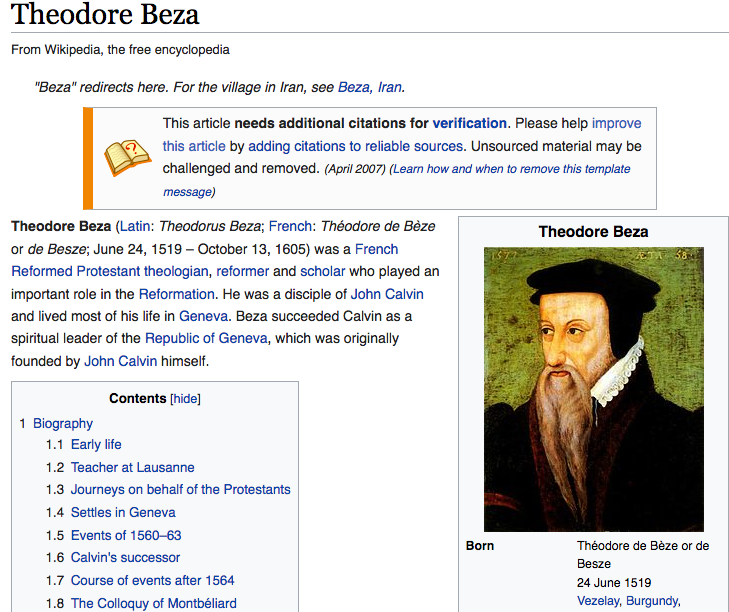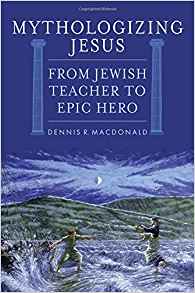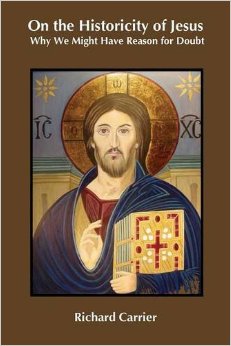A few weeks ago I was asked to comment on Tim O’Neill’s post, Jesus Mythicism 3: “No Contemporary References to Jesus”. I think that was the one. So I caught up with it on my return from Thailand last night so I can respond at last. (If there is another one I was asked to respond to then feel free to advise me.)
My first point is that I don’t think I have ever taken a lot of time to look into who of the authors of the first century c.e. said nothing about Jesus and why this should be surprising if Jesus existed. As I understand it, such lists of names of “who at the time should have mentioned Jesus but didn’t” are presented as part of an argument to prove that Jesus did not exist. I have no problem with people wanting to take that line of argument and try to make their case but it is not where I am at and it is not a line of argument I have tried to follow.
My interest has been to try to explain the evidence for Christian origins according to the standard and best methods followed by historians of ancient history and so far it appears to me that that evidence is best explained by hypotheses that have no place for a historical Jesus. In other words, I do not see any evidence for the existence of a historical Jesus. That is not the same as saying I believe we can prove that Jesus did not exist. I don’t recall ever trying to “prove” that Jesus did not exist. I have often attempted to set out arguments, generally based on either or both serious biblical scholarship and the sound methodologies of ancient history, that demonstrate how the gospels and letters of Paul can well be explained without any need for reaching back to a historical Jesus.
So back to the lists of “who’s who among those who did not mention Jesus”. Here is how I see the best way to approach such lists. I have not done this exercise myself so present it here as what I think I would do if I had the time and interest to take it up.
I would take the arguments of both sides, of those who set out all the reasons such authors should have mentioned Jesus and of those who set out all the reasons we should not expect to see references to Jesus in them. And then I’d try to do my own homework on each of the authors to learn what I can about his background, interests, and what some of the scholars have to say about his work, etc.
Maybe some of you are twigging to where I am leading. In other words I am setting up the two hypotheses and then getting background information. If that reminds you of a Bayesian approach you are right with me.
I’d take each author in turn and ask how expected is the absence of a reference to Jesus in our manuscripts given all that we know about each author and 1) the non-existence of Jesus; and then 2) Jesus failing to attract the attention and interest of the author; and then compare the results.
In other words, I would not take up each argument, the one for and against, and tackle it on its own, either looking to poke holes in it or finding ways to buttress it. Forget the argument and trying to pick winners. Do serious historical research and thinking about the evidence in the light of both hypotheses and background information. Be prepared for the final balance to be tilted either way.
At the end of the day I do not see what difference the result would make to my historical interests in Christian origins. It might make a difference to those attempting to either prove or disprove the existence of Jesus. But as I have said several times now, that’s not a question I want to venture into. To me, the historical question is how to explain the evidence for Christian origins. If we need a historical Jesus to explain it then so be it; if a simpler hypothesis does not require such a figure then so be it.
The key point for me is the absence of known contemporary references to “the historical Jesus”. That brings us back to the methods set out by various ancient historians themselves, such as Moses Finley, which are in sync with the methodological principles set out by the so-called “minimalists” such as Philip R. Davies. I would love to set up an annotated archive page of all the posts I have done on that topic for easy reference.
Oh, and one more detail —
I explicitly mentioned background information in relation to each of the authors. But implicit in what I said is another spectrum of background information, too, and that’s what we mean by a “historical Jesus” figure. Do not rely on what anyone else says a source says, but do your own checking. For example, Tim O’Neill says that according to the Gospel of Mark Jesus there is no indication that Jesus was known beyond Galilee and refers to Mk 1:27-28 and 6:14. But more careful investigators will not overlook Mk 3:8 that also has his reputation extending as far as Jerusalem, beyond Jordan and up into Tyre and Sidon. And then one will have to ask the extent to which such a description is based on a need to emulate and transcend the following of Moses given the larger “midrashic” suggestions in that section of Mark. And do we take as historical the triumphal entry into Jerusalem that implies people knew about him before he came on the scene, etc etc etc.
But if Jesus was a nobody who did not even have a widespread reputation for healing (and despite Tim O’Neill’s attempt to suggest the contrary, even sceptical or critical scholars who accept the historicity of Jesus as a relative “nobody” generally acknowledge he had a significant reputation as a healer) then we need to have a good hypothesis to explain how the early converts were made to “Christianity” from the basis of such a figure in the first place.
In other words, it is going to be difficult to come up with a way to assess the rightful expectations of mention of such a figure in our extant writings. Perhaps we need to work with several hypotheses: no Jesus; minimal Jesus; a medium Jesus (as per a critical scholar’s construct); a max Jesus (as per an apologist view).
Like this:
Like Loading...










